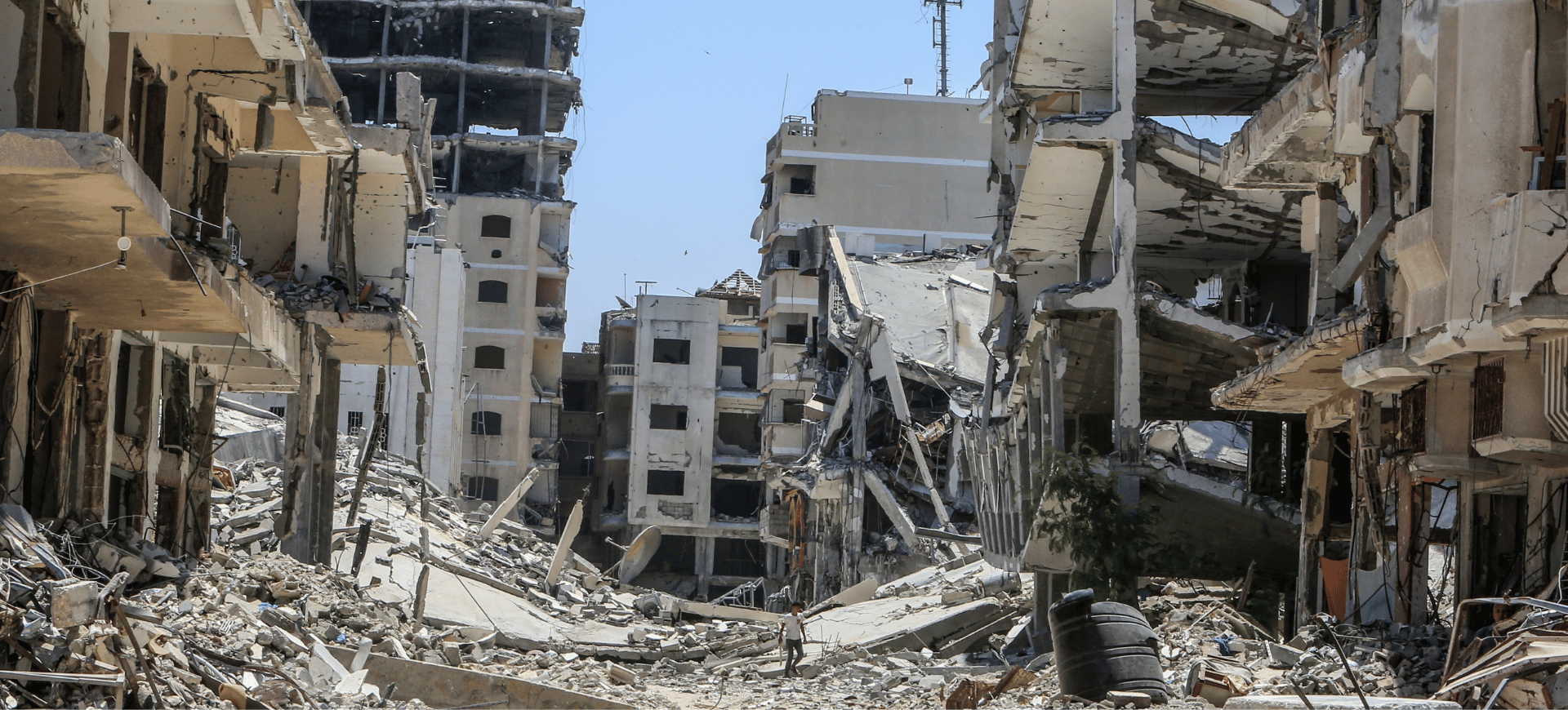Health under siege: conflict, insecurity and the role of humanitarian diplomacy in the Eastern Mediterranean Region
Violent conflict is affecting over a third of the region’s countries, leaving health systems in tatters, causing unparalleled suffering and diverting resources from other pressing issues
Public health in the World Health Organization’s Eastern Mediterranean Region is facing an unprecedented crisis, with fragility and violent conflict directly affecting nine of its 22 countries. As of 2024, nearly 110 million people in the EMR – one in five – require humanitarian aid. This widespread suffering has made the region the source of 58% of the world’s refugees and home to 40% of all internally displaced people.
In recent visits to Afghanistan, Lebanon, the occupied Palestinian territory, Sudan and Syria, I witnessed the dire consequences of political conflict, economic instability and mass displacement on health and well-being. These crises demand more than just health sector support; they require a unified response integrating humanitarian diplomacy and cross-sector collaboration.
The politicisation of health in conflict settings has severe consequences. The health response in Gaza is exacerbated by severe insecurity, access restrictions, the militarisation of hospitals, and attacks on health facilities and humanitarian convoys. In Sudan, humanitarian partners cannot access many people in the Darfur states, Kordofan states, Khartoum state and Al Gezira state, who are cut off from aid.
In Afghanistan and Pakistan – the last two countries with endemic wild poliovirus – eradication efforts are hindered by insecurity, political instability, access constraints and vaccine hesitancy. In Somalia and Sudan, controlling outbreaks of variant poliovirus remains challenging, due to conflict and devastated health systems. Northern Yemen faces formidable challenges where authorities refuse vaccination campaigns, worsening outbreaks of polio, cholera, measles and diphtheria.
Water-borne and vector-borne diseases such as cholera, malaria, dengue and leishmaniasis are spreading, driven by displacement and weakened health systems in conflict settings. In the first half of 2024, 69 outbreaks were reported across 21 EMR countries, almost matching the 73 outbreaks recorded throughout 2023.
After more than 365 days of war, almost all Gazans face acute food insecurity, with 22% experiencing catastrophic hunger, perilously close to famine. In Sudan, a 45% increase in acute food insecurity over the past six months affects 25.6 million people. Famine has already been reported in North Darfur’s Zamzam camp. This hunger crisis extends to Yemen, Somalia, Afghanistan and Syria, where malnutrition rates have tripled over the past five years.
Increased rates of anxiety, depression and post-traumatic stress disorder are prevalent in many conflict-affected countries. After spending time in Gaza in particular, I saw that everyone is suffering from the psychological impacts of the war. Gender-based violence in conflict-affected countries is also a specific concern, with a recent Human Rights Watch report detailing widespread sexual violence towards girls and women in Sudan.
Despite multiple challenges, the WHO has reliably demonstrated that, given adequate resources and access to those in need, good health outcomes are possible even in the most challenging circumstances. In 2023, case fatality rates for seven of eight cholera outbreaks were kept within international standards. Cure rates for severe acute malnutrition in WHO-supported stabilisation centres in Afghanistan, Pakistan, Somalia, Sudan, Syria and Yemen consistently exceed international standards. And recent external evaluations of the WHO’s work in Syria and Yemen, as well as the response to Covid-19, have all been very positive, highlighting how the WHO adapts its work according to high risks and operational contexts.
Economic instability compounds these conflict-related health challenges. In Yemen, where 80% of the population lives below the poverty line, people are often forced to choose between buying food or health services, perpetuating a cycle of poverty and poor health. In Syria and Lebanon, economic instability has led to health workers seeking options abroad. This migration, while showcasing the region’s ability to cultivate skilled professionals, underscores a pressing issue: retaining them amid ongoing crises. To address this, strengthening the health workforce is one of my three regional flagship initiatives. However, this goal can only be achieved by revitalising health systems and resolving the political and economic challenges that drive health workers to flee.
The economic burden of conflict diverts resources from development to emergency response, and impedes progress towards health goals, including universal health coverage and reduced mortality rates. Additionally, sanctions, intended to exempt health, produce significant shortages of medical supplies, further straining fragile health systems.
In conflict-affected countries of the region, as in any country, health is a cornerstone of life, family, community and sustainable development. Improvements in health facilitate progress in other sectors, and advances in those sectors contribute to better health outcomes. The WHO is committed to advancing solutions that prioritise health equity, solidarity and cooperation. At a regional level, I am actively building consensus on a comprehensive vision that strategically leverages the region’s political, financial and human resources.
In the occupied Palestinian territory, the WHO works with Palestinian and Israeli authorities, humanitarian organisations and international donors through diplomatic channels to facilitate the delivery of aid, medical supplies and humanitarian missions to address Palestinians’ health needs. In Sudan, the WHO negotiates cross-border humanitarian access to ensure that life-saving aid reaches inaccessible populations through local partners. Following repeated advocacy by the WHO and the United Nations, recent news that Sudanese authorities have opened the Adre crossing between Chad and North Darfur is a positive step towards saving lives and averting famine in Sudan.
The ministerial Regional Subcommittee for Polio Eradication and Outbreaks is a key example of collective intra-regional health diplomacy. Co-chaired by Qatar and the United Arab Emirates, it meets three times a year and includes leaders from the Global Polio Eradication Initiative’s Oversight Board and UNICEF regional directors. It reviews progress, coordinates regional efforts and strengthens the political commitment to polio eradication, helping to address challenges such as access, conflict and funding.
In Yemen, Somalia, Afghanistan, and Syria, the WHO is pivotal in negotiating ceasefires for vaccination campaigns and essential health supplies. We are also addressing the health impacts of climate change by developing national adaptation plans for water, sanitation and vector control. Additionally, the WHO collaborates with member states to tackle non-communicable diseases through advocacy, public health campaigns and capacity building. In Afghanistan, a surge in opium production has resulted in over five million addicts. We are committed to working with the United Nations Office on Drugs and Crime and other partners to develop guidance on developing multisectoral national action plans addressing substance abuse and its root causes.
These examples highlight the significant progress achievable through humanitarian diplomacy and collective action. However, the bottom line remains clear: to truly advance health and well-being in the Eastern Mediterranean Region,
we need peace.
As our region faces an increasing risk of a wider war, political stakeholders must prioritise dialogue that highlights how conflict undermines health, economic stability and sustainable development. Member states, within and outside the region, must step up for collective action, embracing multilateralism, international cooperation and multistakeholder engagement to breathe new life into humanitarian diplomacy.












